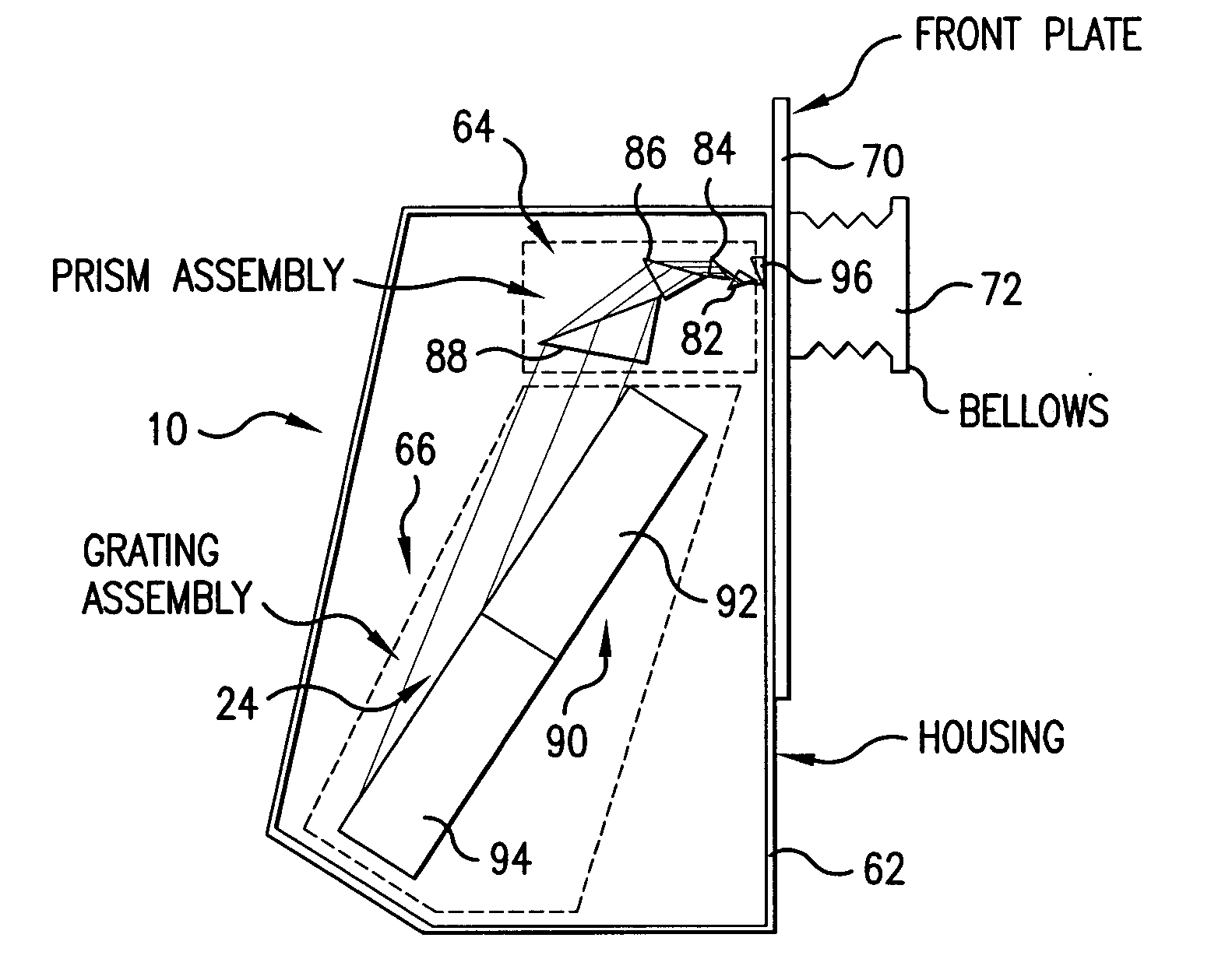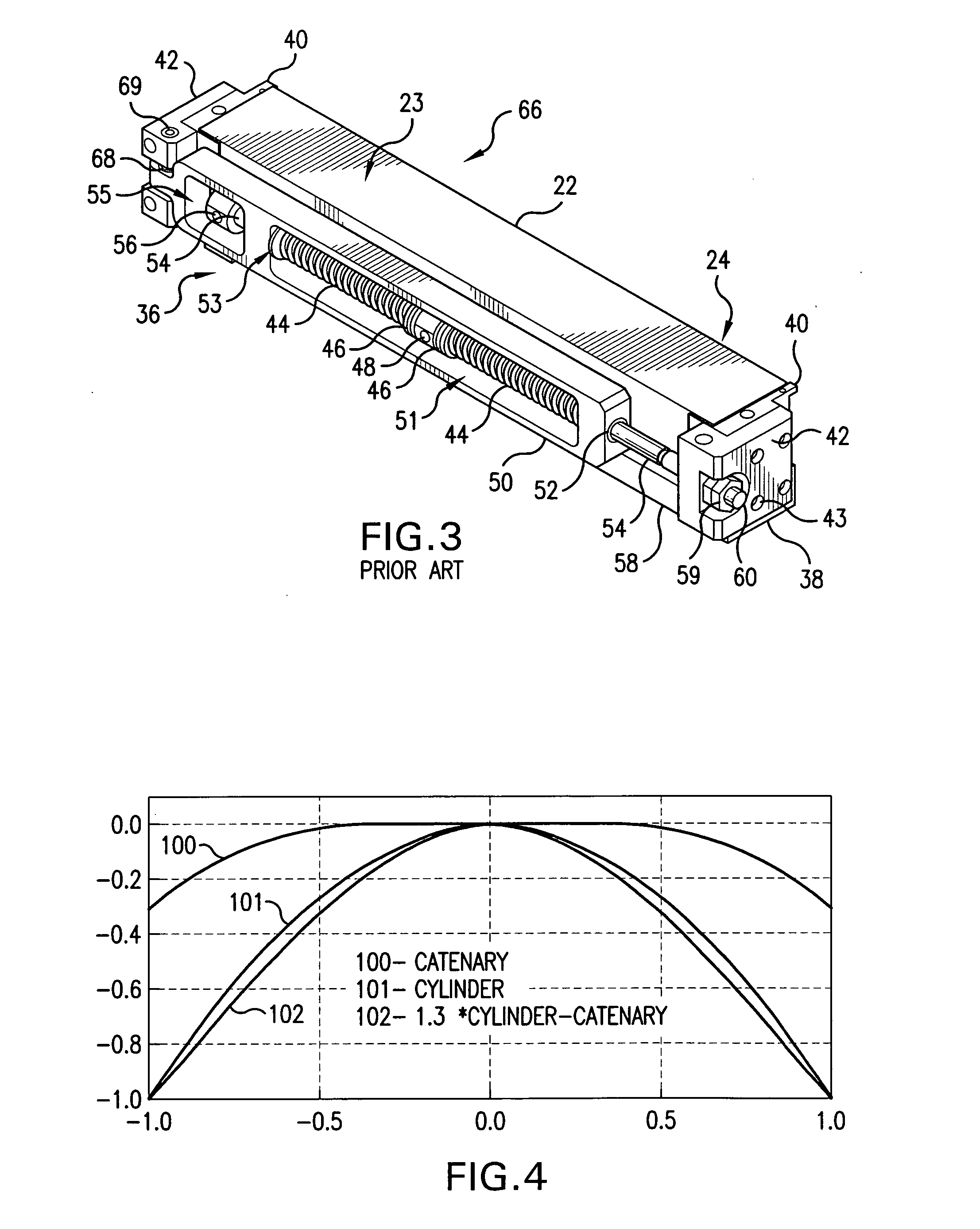High power high pulse repetition rate gas discharge laser system bandwidth management
- Summary
- Abstract
- Description
- Claims
- Application Information
AI Technical Summary
Benefits of technology
Problems solved by technology
Method used
Image
Examples
Embodiment Construction
[0028] The need for active control of laser bandwidth, e.g., of either or both of FWHM and E95, has been requested by applicants' assignee's customers for its laser system products and many of the end users for such products. Applicants propose ways for better bandwidth control and also to control both FWHM and E95, independently, according to aspects of an embodiment of the present invention, e.g., by using two independent adjustments so that both parameters can be adjusted and maintained within a set range of values. One of the existing ways of modifying bandwidth, as illustrated in FIGS. 1A and 1B utilizes, e.g., a bandwidth control device (“BCD”), e.g., as presently implemented in the laser's line narrowing module (“LNM”), e.g., in applicants assignee's 7XXX and XLA-XXX series of products. The BCD affects the cylindrical curvature of a dispersive center wavelength selection optical element, which also produces a bandwidth of some width FWHM and E95, e.g., the grating in, e.g., a...
PUM
 Login to View More
Login to View More Abstract
Description
Claims
Application Information
 Login to View More
Login to View More - R&D
- Intellectual Property
- Life Sciences
- Materials
- Tech Scout
- Unparalleled Data Quality
- Higher Quality Content
- 60% Fewer Hallucinations
Browse by: Latest US Patents, China's latest patents, Technical Efficacy Thesaurus, Application Domain, Technology Topic, Popular Technical Reports.
© 2025 PatSnap. All rights reserved.Legal|Privacy policy|Modern Slavery Act Transparency Statement|Sitemap|About US| Contact US: help@patsnap.com



